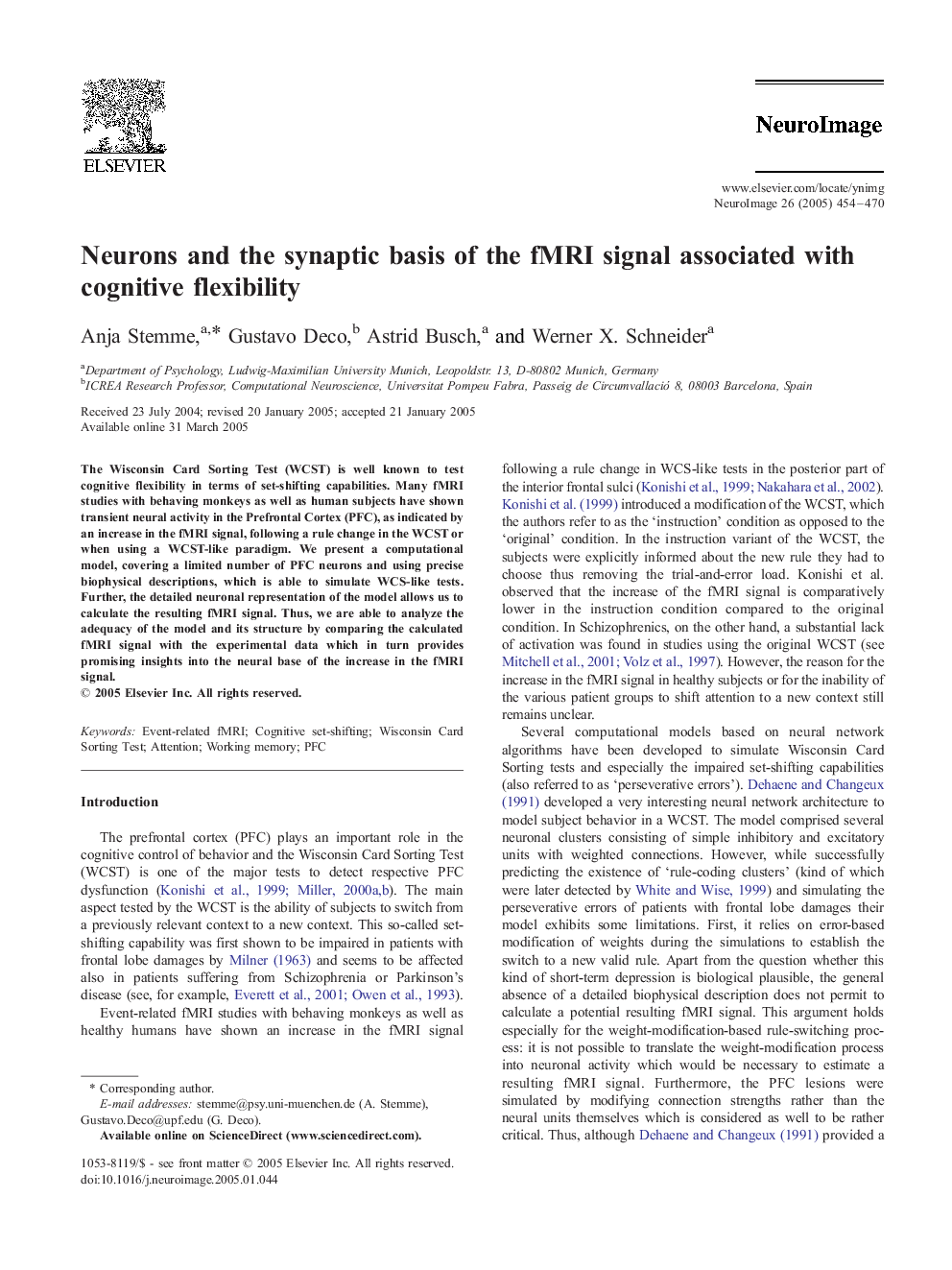| Article ID | Journal | Published Year | Pages | File Type |
|---|---|---|---|---|
| 9197905 | NeuroImage | 2005 | 17 Pages |
Abstract
The Wisconsin Card Sorting Test (WCST) is well known to test cognitive flexibility in terms of set-shifting capabilities. Many fMRI studies with behaving monkeys as well as human subjects have shown transient neural activity in the Prefrontal Cortex (PFC), as indicated by an increase in the fMRI signal, following a rule change in the WCST or when using a WCST-like paradigm. We present a computational model, covering a limited number of PFC neurons and using precise biophysical descriptions, which is able to simulate WCS-like tests. Further, the detailed neuronal representation of the model allows us to calculate the resulting fMRI signal. Thus, we are able to analyze the adequacy of the model and its structure by comparing the calculated fMRI signal with the experimental data which in turn provides promising insights into the neural base of the increase in the fMRI signal.
Related Topics
Life Sciences
Neuroscience
Cognitive Neuroscience
Authors
Anja Stemme, Gustavo Deco, Astrid Busch, Werner X. Schneider,
